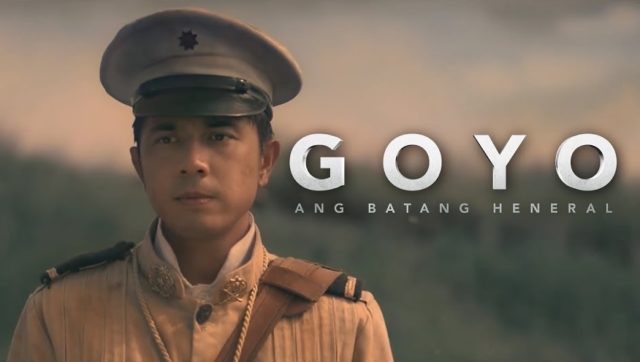THE FILM is aptly titled Goyo, referring, of course, to the boy-hero’s pet name drawn from Gregorio. But, viewers are not fooled. The title has a second, more interesting suggestive meaning, historical pun intended or not. Anyone claiming to be “na-goyo” means that the person has been fooled. Was the boy-general Gregorio del Pilar fooled by the Republic’s first president Emilio Aguinaldo? Does Goyo share the same pettiness of vision, the same shallow and short-sightedness of leadership and nationalism of boss Aguinaldo? Was he indeed Aguinaldo’s “dog”?
Goyo the film, or the life of the boy-general of the Philippine Republic’s Gregorio del Pilar, is an indictment of Aguinaldo’s brand of leadership and nationalism. Whatever can be said of the Aguinaldo leadership, interestingly enough, can also be said of his nationalism: petty, parochial, short-sighted and bordering on a shallow value of loyalty. The Aguinaldo leadership and nationalism, the film posits, lack the grandness of vision, the strength of honor and the power of dignity. The same brand of governance and nationalism will hound the succeeding leaders of this Republic. However, it can be argued that Aguinaldo’s youth can be faulted as he was only 29 years old then when he took the helm of presidential responsibility. But then again, Aguinaldo lived a long-life and historians can argue that there was no difference anyway.
Artikulo Uno, the same creative group that brought us the blockbuster Heneral Luna, was upfront at the beginning of the film, about the marriage of historical accounts and imaginative themes. Just like Heneral Luna, Goyo is a creative success in cinematic storytelling. One brilliant sample of a possible imaginative stretch is whether or not Goyo was actually hounded by a personal demon of being a mere dog to Aguinaldo. Or, did he actually imagine or reference himself as an aguila, to the grand dream of nationhood? This creative brilliance in cinematic story telling not only provided the theatrical and emotional depths of the film, but also set the necessary dramatic tension that sparked the eventual evolution of the boy-general into a hero.
Accordingly, Articulo Uno posits that Goyo, the boy-general was crossing his Rubicon when he reached Tirad Pass. The brilliant cinematic visuals ensured it so. Tirad Pass was not only the physical location of Goyo’s martyrdom, but his final hero-transformation. In Tirad Pass, he saw the larger vision of a country versus simply following a president. In Tirad Pass, the character played by Ronnie Lazaro showed Goyo the larger-than-life dream of nationhood. In Tirad Pass, Goyo was not a dog, but an eagle. In Tirad Pass, there was no turning back to the grand dream of nationhood, to his final romantic love, to the dignity of his soul, and to his own mortal life.
This progressive narrative tension or conflict, the same formula used in Heneral Luna, is Artikulo Uno’s success in historical filmmaking, better still, to creative film making. This is the kind of historical filmmaking that will make you awake long before the movie is over. Given the early news that Artikulo Uno is doing the more intellectual and psychological Apolinario Mabini, we are all drooling in bated expectations. News has it that public and private schools are making Goyo a required watching. Rightfully so.
What makes Goyo a compelling piece of cinematic storytelling? One, the film is definitely ten notches higher in visual renderings. They were calculated, memorable and breathtaking. It has an intelligent script for Pete’s sake! Two, the film’s messages can easily connect with our lives as Filipinos. The film is a good conversation piece for the nagging issues of impunity, neglect of duties and pettiness of vision and character of our leaders, un-scrutinized loyalty, and yes JP, that grand imaginative dream of Filipino nationhood.
Readers, please, pretty, pretty please: Watch Goyo! (raclores2014@gmail.com)





